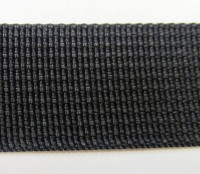- Local: (516) 346-4636
- Toll-Free: (800) 886-6060
- Fax: (516) 346-4366
- Email: kflynn@nationalwebbing.com
When searching for tie down webbing, there are a few factors to take into consideration. While most tie down webbing looks similar, there are critical differences between the materials. The three fabrics used for this are polyester, polypropylene, and nylon webbing.
Are you unsure of which material will work best for your needs? We’re here to help. Let’s go over the main properties of tie down webbing and determine how each material relates to the features.
UV Protection - Polyester webbing is your best option if you’re worried about UV exposure. Polyester is resistant to UV radiation so that it can handle prolonged sun exposure.
Break Strength - Break strength refers to the maximum load or stress material can handle before it breaks or fails. Polypropylene has a low break strength at 700 pounds, with polyesters having the highest as it can withhold up to 10,000 pounds.
Fiber Stretch - Nylon and polyester work best for tie downs as they stretch only between five and thirty percent making them ideal for heavy loads.
Abrasion Resistance - You’ll want to ensure your tie down webbing resists abrasion. The most insignificant damage may cause the tie down to fall during use. Polyester is more resistant to webbing than other materials.
Water Resistance - Excessive water affects the durability and strength of tie down webbing. If you’re worried about water exposure, do not get nylon as it will absorb water. You should opt for polyester or polypropylene instead. Even when wet, polyester and polypropylene are still durable.